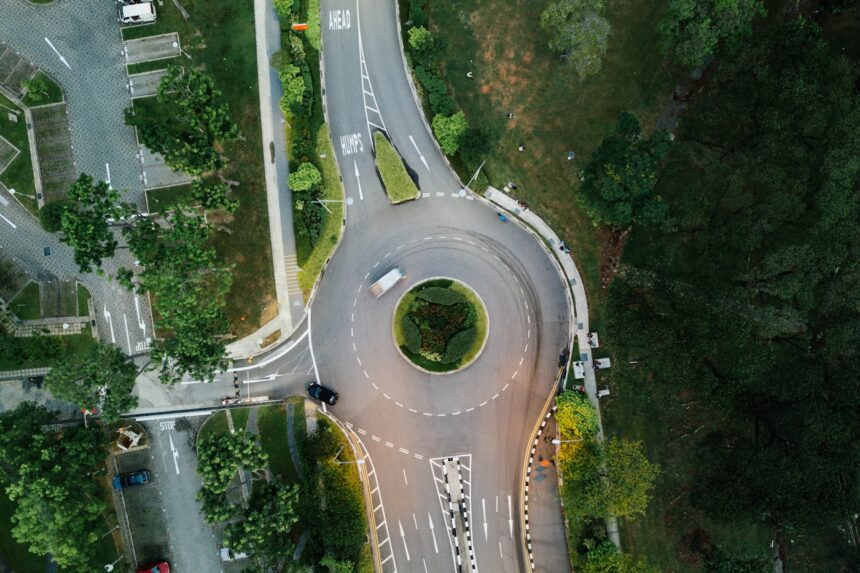Analyzing a Roundabout: Key Factors and Considerations
Analyzing a roundabout involves evaluating various factors to ensure traffic efficiency and safety. Here’s how you can approach this analysis:
Contents
1. Assessing the Need for a Roundabout
Advantages:
- Traffic Flow Improvement: Roundabouts reduce wait times and improve traffic flow compared to signal-controlled intersections.
- Safety: Statistics show that roundabouts reduce the number and severity of accidents due to lower speeds and clear traffic directions.
- Maintenance Costs: Roundabouts require less maintenance compared to traffic signals.
Disadvantages:
- Construction Costs: They can be more expensive to construct, especially in densely populated urban areas.
- Space Requirements: Roundabouts need more space than traditional intersections, which can be an issue in crowded urban settings.
2. Designing the Roundabout
Dimensions and Layout:
- Diameter: Determined by the traffic volume and types of vehicles that will use the roundabout. Larger diameters are needed for trucks and buses.
- Lanes: The number of lanes should be proportional to the traffic volume. Multi-lane roundabouts can handle higher traffic volumes but are more complex and require clear signage.
- Central Island: Designed to guide vehicles and reduce speeds. It can be landscaped for aesthetic purposes but must ensure good visibility.
Access and Egress:
- Entries and Exits: Should be well-designed to minimize conflicts between vehicles and ensure continuous traffic flow.
- Acceleration/Deceleration Lanes: May be necessary in high-traffic roundabouts to allow vehicles to enter and exit safely.
3. Signage and Markings
Signage:
- Traffic Signs: Must be visible and clearly positioned to inform drivers about the entries and exits of the roundabout.
- Night Lighting: If needed, the roundabout should be well-lit to ensure visibility at night.
Road Markings:
- Guidance Lines: Clearly marked to help drivers follow the correct paths.
- Buffer Zones: Painted on the road to indicate the boundaries of the roundabout and prevent incorrect entries.
4. Traffic Flow Analysis
Traffic Studies:
- Counting: Evaluating the number of vehicles using the intersection at different times of the day.
- Vehicle Types: Analyzing the types of vehicles (e.g., cars, trucks, bicycles) using the intersection to adjust the design accordingly.
Simulations:
- Traffic Simulation Software: Using software to visualize how the roundabout will function and identify potential problems before construction.
5. Environmental Impact
- Pollution: Assessing the impact on air quality and noise levels.
- Landscaping: Integrating the roundabout into the existing landscape and using natural elements to minimize negative visual impact.
6. Feedback and Improvements
Public Consultation:
- Surveys and Public Meetings: Gathering feedback from the community to ensure the roundabout will meet local needs.
- Monitoring: After construction, monitoring the performance of the roundabout and making necessary adjustments.
Analyzing a roundabout involves a detailed evaluation of numerous aspects to ensure traffic efficiency and safety. Through careful planning and an integrated approach, roundabouts can bring significant benefits to local communities.







